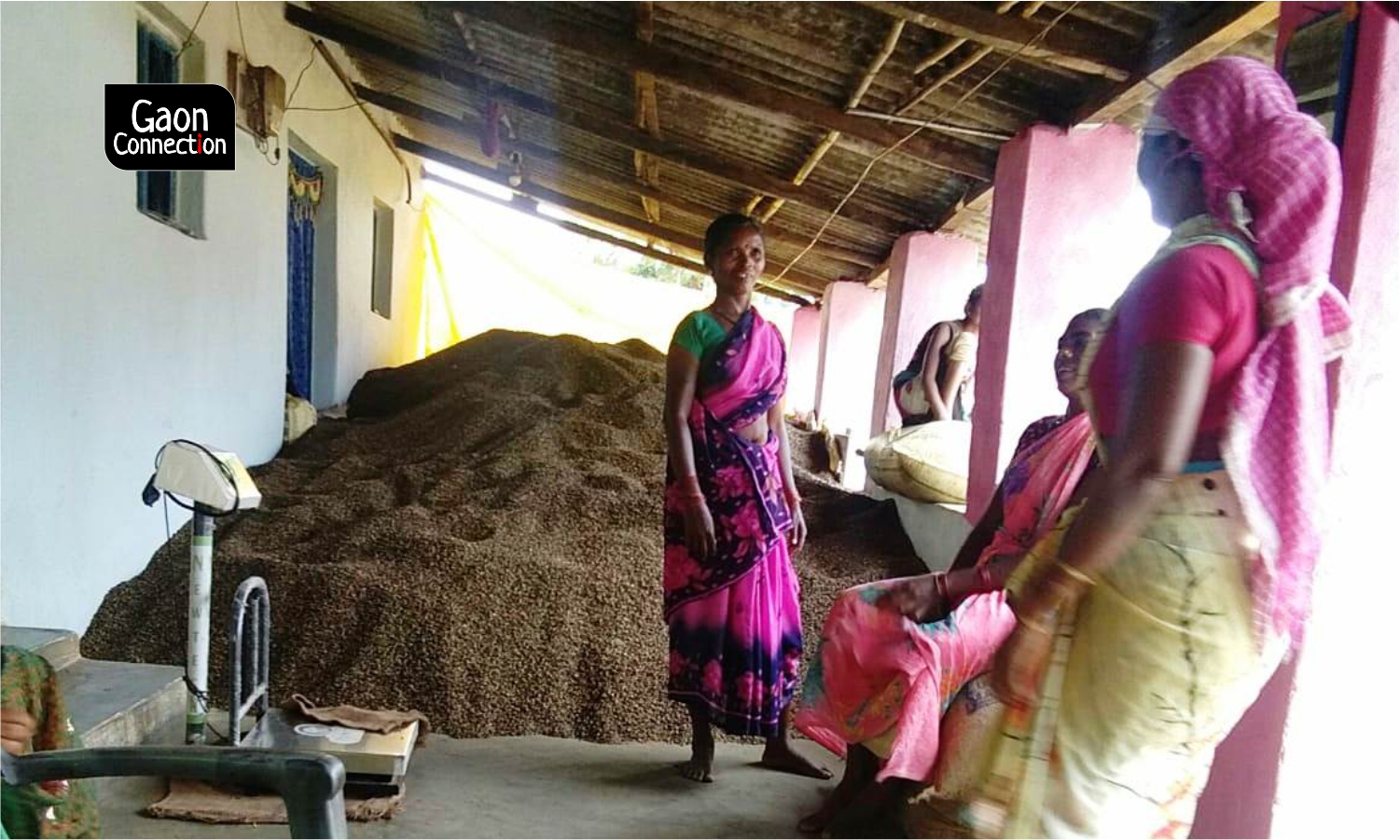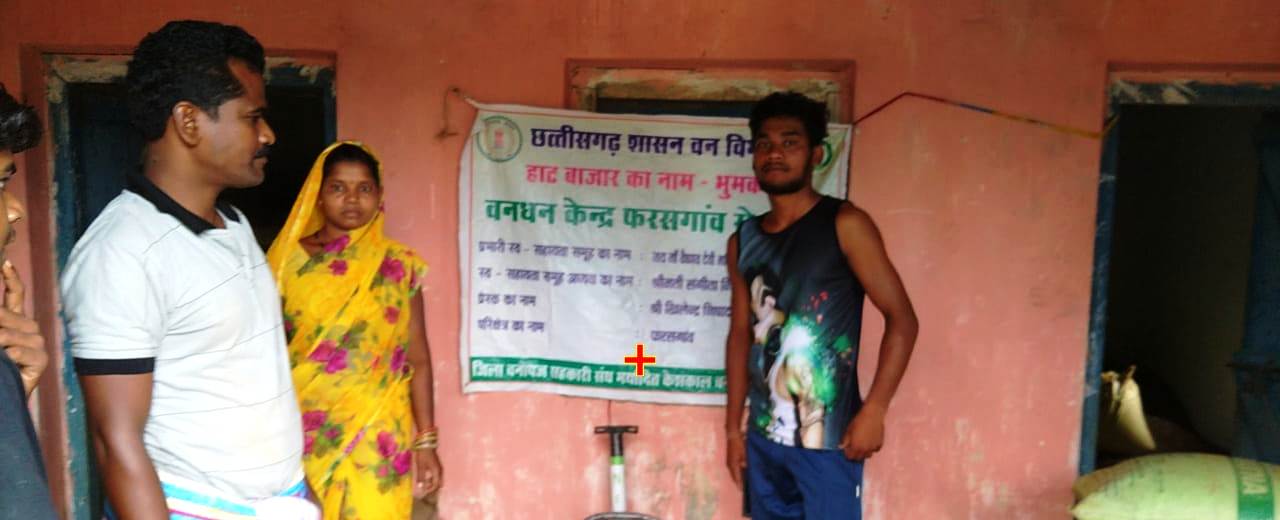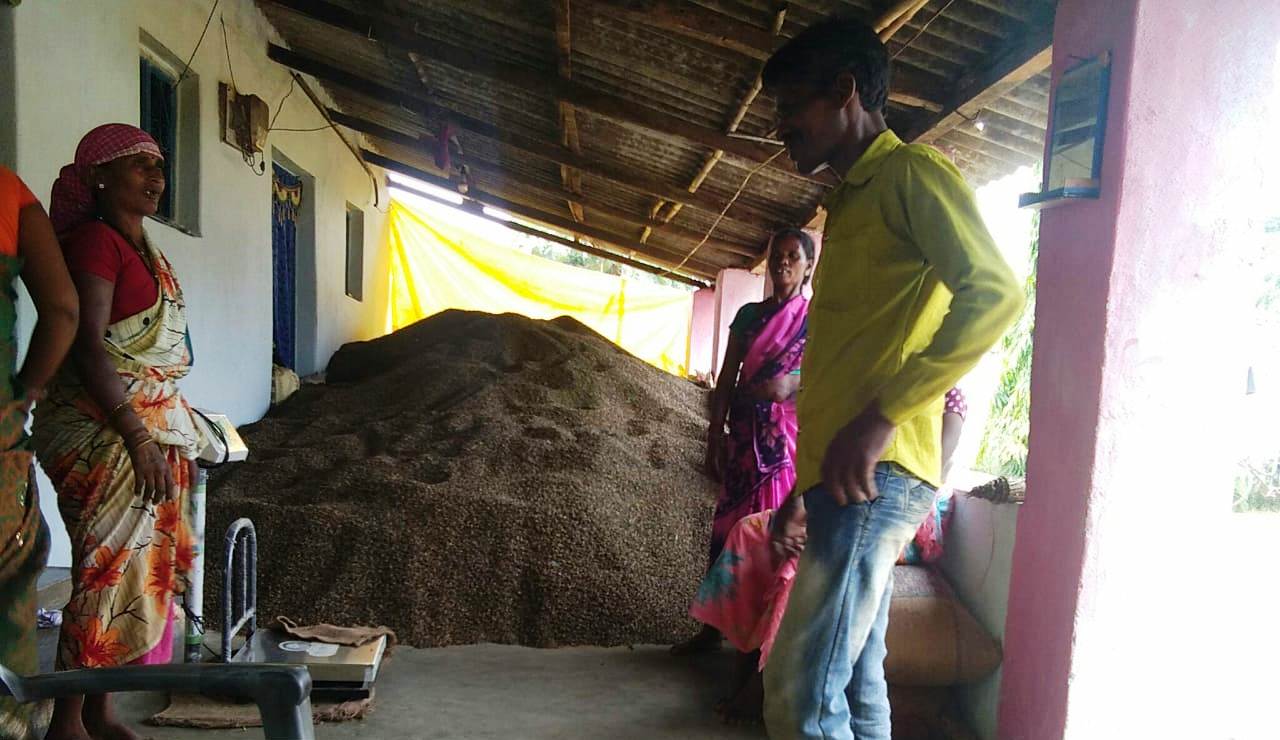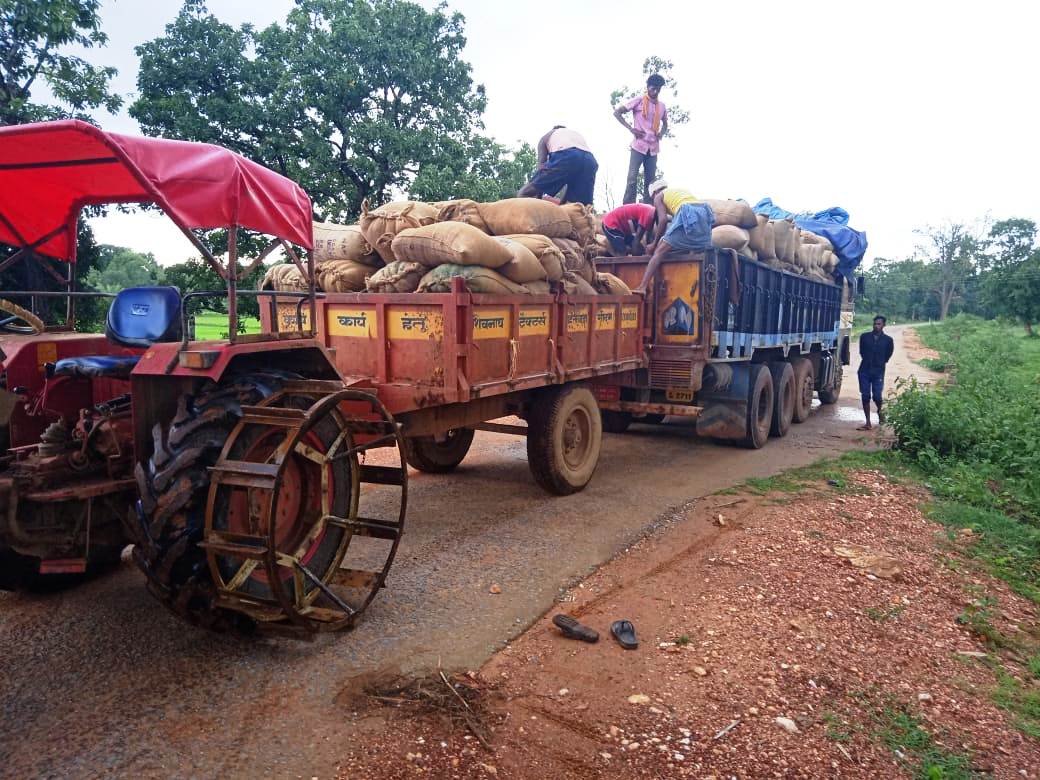In a first, Chhattisgarh’s women self-help groups facilitate record collection of sal seeds
This year in Chhattisgarh, a three-tier purchase model was activated to buy minor forest produce from tribal gatherers after the lockdown was announced in March.


Chhattisgarh records high sal seed collection this year. Photo: Deepanwita Gita Niyogi
Janak Dulari Pandey, a resident of Banskot village in Kondagaon district of Chhattisgarh, exudes confidence. Once a homemaker who used to help her family in farming, Pandey now heads the 11-member Jyotikala women’s self-help group (SHG). It played a pivotal role in the purchase of minor forest produce (MFP) last month, especially sal seeds ( Shorea robusta) and tamarind, from the tribal communities.
In the forest villages of Chhattisgarh, tribal communities depend on the collection and sale of a variety of MFPs for livelihood opportunities throughout the year. Chhattisgarh has about 44 per cent geographical area under forest cover, and Sal forests cover 19,682 sq km area or 14.56 per cent of the geographical area. The estimated trade of non-specified MFPs, which includes sal seeds, stands at Rs 750 crore.
“During the sal-seed collection season in the second half of June, I worked from 8 am to 5 pm. My work keeps me happy and active,” Pandey told Gaon Connection while preparing a wholesome family dinner comprising rice, dal, and fish curry.
After the announcement of the lockdown on March 24, 2020, a three-tier SHG model was activated across Chhattisgarh to purchase MFPs. The SHGs functioning across the state, for the first time, purchased sal seeds and tamarind, among other MSPs, directly from forest gatherers or collectors, keeping unscrupulous traders and middlemen at bay.
For instance, in the Keshkal forest division of Kondagaon district, some 158 village-level SHGs, other than Jyotikala, purchased sal seeds and tamarind directly from the gatherers. MSP offered for sal seeds stood at Rs 20 per kilogram instead of the usual Rs 8-12 per kg offered by traders and middlemen.
This year, roughly from June 15-30, 64,866 quintals (64,86,600 kg) of sal seeds have been collected in the Keshkal division. This has enabled collectors to earn Rs 7,000-8,000 on average in this period.
Primary collectors – pickers or gatherers – collect sal seeds in the forest after they fall on the ground. Bhag Singh Suryavanshi, the deputy ranger of Keshkal forest division, said sal seeds fall on the ground due to strong winds. This year, every family here has collected a minimum of two to three quintals (300 kg) on average.
“This time, after three years, there has been ‘record’ collection of sal seeds,” Keshkal sub-divisional forest officer Mona Maheshwari added. “Sal-seed transportation is taking place now in my division. Almost 80 per cent is done,” Maheshwari added.
“As the rate was high, the traders did not buy. Next year also, the collection will happen through the SHGs,” said Paras Ram Kashyap, forest division’s deputy ranger in-charge of the Bade Rajpur range.
This year also witnessed record collection of sal seeds – 2,57,937 quintals (2,57,93,700 kg) state-wide, from 22 forest divisions. “Since the introduction of the MSP, we collected the maximum this year. Last year, the sal seed collection stood at 70,000 quintals in Chhattisgarh,” said Ananda Babu, additional managing director at the Chhattisgarh Minor Forest Produce Federation, a cooperative based in Raipur to aid the trade of MFPs.
South Kondagaon forest division recorded a good amount of sal seed collection this year, said Uttam Gupta, the divisional forest officer (DFO) of Kondagaon (South). It stands at 89,394.66 quintals (89,39,466 kg) compared to 3,000 quintals (3,00,000 kg) last year.
The process of producing sal seeds
Gaon Connection spoke to Gangaram Paikra, whose non-profit Choupal based in Surguja district of Chhattisgarh is working with tribal communities. “After collection, primary collectors bring the seeds home and then set them to mild burning for decortication to separate the wings and seed coats from the seeds and kernels. Then it is cleaned. It is a tough job especially during the hot summer month of June,” he said.
Paikra added that some collectors set fire to the seeds in the forest, which is not an ideal thing to do, but most bring them home. Removing the seed coat is difficult and despite different kinds of processing machines available in the market, there is no machine for sal seed de-hulling, Paikra noted.
The collection and sale of MFPs is part of the Van Dhan Scheme, a central government initiative that aims to improve tribal income. There are some 18 MFPs traded in the state. The Chhattisgarh government wants to increase the processing rate of MFPs. Around 139 primary processing centres have been identified so far.

The sal seeds produced are then bought by the SHGs. After that, the produce is handled at two more levels, involving the haat bazaar (weekly market)-level SHGs and the Van Dhan-level SHGs for cleaning, sorting and packaging into gunny bags. There are four Van Dhan-level SHGs and 47 haat bazaar-level SHGs in Keshkal.
“We have SHGs working at three levels. Generally, haat bazaar and village-level SHGs purchase the produce from collectors and check the quality as well as quantity. Then the women pack the produce in gunny bags, 40 kg in each bag, for every MFP,” said Maheshwari.
Once that is done, the gunny bags are transported in trucks to godowns located in various parts of the state. This completes the three-tier model.
Hurdles on the ground
A forest department insider, on the condition of anonymity, said that in many places, the three-tier model was not properly followed because it is not practically possible. If a village-level SHG is non-functional, the haat bazaar-level SHG directly buys the produce. Then they can also send the produce to the godowns without even going through the Van Dhan-level SHGs. “It is true that this kind of shortcut compromises the processing quality to a great extent, but we need a lot of people for the three-tier model to work,” the source said.
Pandey from Jyotikala SHG said about 900 quintals (90,000 kg) of sal seeds have been bought in June, but they are still lying about in Banskot village, which is a huge area. “A good quantity of seeds have been purchased since June 14, but loading the trucks has become a problem due to the shortage of labour,” Pandey said.

In Dantewada district, 754 quintals (75,400 kg) of sal seed were procured from 337 collectors. Geedam forest protection committee manager in Dantewada said the women faced problems in loading and unloading the gunny bags but they were given the best-possible help.

Madhubala Borkar, who heads the Jai Lakshmi SHG at the village level, said there has been a purchase of 1,366 quintals (1,36,600 kg) of sal seeds in Salna village since collection that started mid-June.
However, Borkar said her SHG had to fight with traders, who surreptitiously entered the villages and offered even up to Rs 40 per kg for tamarind. Somehow, a few traders reached the villages with their own vehicles and offered Rs 36-Rs 40 per kg to tribal gatherers. When we started buying at Rs 31 per kg, they suddenly increased the rates. Earlier, they were offering Rs 22 per kg for tamarind. “We faced a lot of difficulty due to this and I have informed the primary forest committee manager and the ranger. They were so secretive in their dealings,” Borkar added.
Borkar’s SHG had to apply for a loan worth Rs 3 lakh from the Gramin Bank and is looking forward to the commission. “We got the loan for buying sal seeds. The forest department was late in giving us the money for buying and so we had no other option left,” she said.
Edible oil extracted from sal seeds is used in the chocolate industry, often as a replacement for cocoa butter. Last year, around 10,000 quintals (10,00,000 kg) of sal seeds were procured in the division. The oil is extracted from sal seeds by five to six plants in India, mostly for export purposes. This time, however, because of the COVID-19 crisis, seeds may not be sold immediately, leading to losses. “About 75,000 quintals (75,00,000 kg) of seeds will have to be stored in cold storage,” Ananda Babu pointed out.
As it was the first time, all the SHGs were closely monitored by the 16 primary forest committees in Keshkal. One such committee is the Chingnar Primary Forest Committee in the Chingnar village. Its manager Lambodar Pradhan said: “Right now, we are loading the produce in trucks for sending to Dhamtari and Raipur. We do not have local processing centres.”

